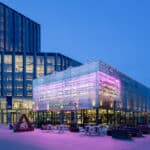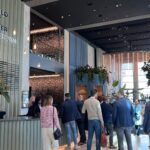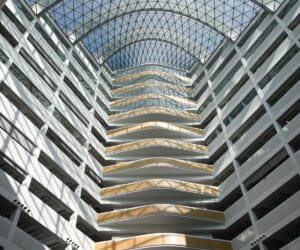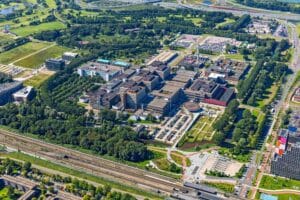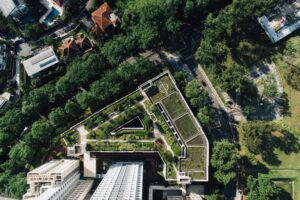
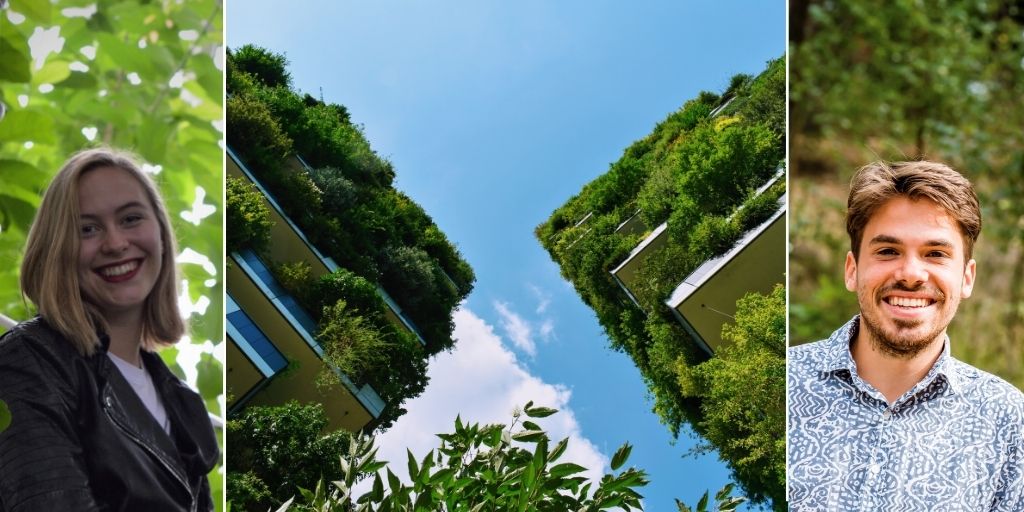
Four important trends of circular construction
It is estimated that the construction sector is responsible for 50% of the total consumption of raw materials in the Netherlands. Circular construction is therefore of great importance for the transition to a circular economy. Demi Alders and Boas Kraaijeveld, consultants at CFP Green Buildings, describe four important trends relating to circular construction.
1. Urban mining gives materials from the city a second life

One trend in the field of circular construction is urban mining. But what is that exactly? In urban mining, materials from the city – that have reached the end of their lifecycle – are reused in new projects.
Demi Alders, consultant at CFP: “We are seeing more and more construction companies using ‘urban mines’ or ‘material hubs’. In these urban mines, the materials are processed and temporarily stored until they are given a new purpose. This allows construction companies to ensure that as much material as possible gets a second life.”
2. Modular construction: flexibility, circularity and less environmental impact
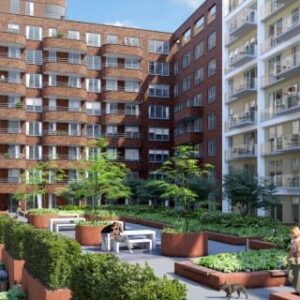
Modular construction is becoming increasingly popular and it can be applied to different aspects of a building. For example, the outer shell of a building can be modular, but so can the installations and the interior.
The various components of a building have different lifespans and it is therefore important to design a building in modular fashion, so that the various elements can be replaced independently of each other. Demi: “A good example of this are the houses along the Laan van Spartaan road in Amsterdam. The modular design reduces material loss and transport movements, reducing the construction project’s environmental footprint. In addition, modular construction leads to greater flexibility, because when the building is given a different function, the units can be taken apart and they can be re-used for other projects.”
3. Building with wood completes the circle
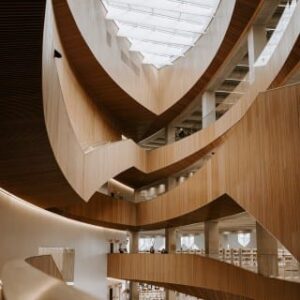
There are currently many innovations regarding building with wood. An example of this is nature-inclusive construction with cross-laminated timber (CLT). This is a cross-glued wood construction that is enormously strong and is a worthy alternative to concrete. It is therefore also suitable for high-rise buildings.
Boas Kraaijeveld, consultant at CFP: “The big advantage of cross-laminated timber is that it has the potential to be made really fully circular. In addition, a wooden building is a carbon repository as carbon is absorbed by trees and stored in wood. It is of course important to use wood from trees planted under responsible forestry management. This will allow us to come full circle and actually achieve regenerative buildings. Fortunately, there are already several examples of wooden buildings. For instance, the highest wooden building in the world, called ‘Mjøstårnet’. This wooden skyscraper is located in Norway and is a mind-blowing 85.4 (!) metres high.”
4. Nature-inclusive construction brings nature back to the city
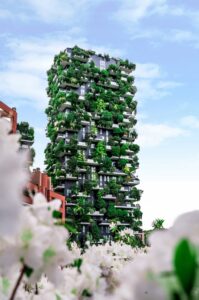
Circularity is not only about closing the loop, but also about regenerating natural systems. And that is very important, because the Netherlands is faced with the major task of solving both the nitrogen and climate crisis and the enormous housing shortage.
This seems to be a contradiction, but circular buildings can offer a solution here too, provided they are built entirely nature-inclusively. Boas: “In nature-inclusive building, buildings and nature go hand in hand. It contributes to biodiversity and ensures that nitrogen, carbon and all sorts of fine particles are filtered from the air. Nature-inclusive building improves air quality and therefore creates a healthier environment for plants, animals and people. In other words, a win-win-win situation. Fortunately, there are already enough examples to demonstrate the wonderful collaboration between building and nature. For example, the iconic ‘Bosco Verticale’ in Milan. It’s practically a forest wrapped around a building. In the Netherlands, too, projects of this kind are getting off the ground. In Utrecht, for example, ‘Wonderwoods’ is being built, where two towers will be completely integrated with green living, both outside and in. This is how nature is being brought back to the city.”
In conclusion
We are currently facing an enormous challenge: from the nitrogen and climate crisis to increasing material scarcity, housing shortage and a growing population. The circular economy can offer solutions here, provided they are truly circular and designed to be nature-inclusive. ‘Vertical forests’ and fully circular buildings show solutions to both material scarcity and the nitrogen and climate crisis, while also providing opportunities to solve the housing crisis. And as the well-known Chinese saying goes: the best time to start doing this is 20 years ago!

